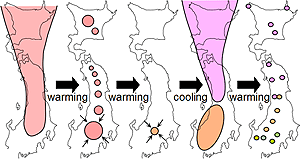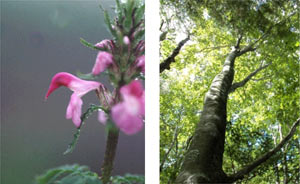
Figure 1 A possible phylogeographic scenario for Japanese alpine plants
【分子系統地理学的解析】
日本列島には約5,500種もの維管束植物が知られ、系統学的、進化学的、生物地理学的にも興味深い植物群を含んでいる。そこで日本列島の植物の分布変遷過程や固有種の種分化過程を解明するために、分子情報を用いた系統地理学的な解析を進めている。日本列島の多様な植物相がどのように成立してきたのかを解明することを目指している。これまで日本産高山植物やブナ、イワタバコなどを用いた研究を行ってきた (Figures 1 and 2)。

Figure 1 A possible phylogeographic scenario for Japanese alpine plants

Figure 2 Pedicularis chamissonis and Fagus crenata
【九州地方における植物の分化】
今後、熊本という地の利を活かし、九州地方および南西諸島を中心とした植物の種分化過程や分類、遺伝学的な特徴を明らかにする研究を進める予定である。阿蘇地域に特徴的な植物の起源やソハヤキ要素植物や屋久島固有種に着目した研究などを行う予定である。
Phylogeographic analysis using Japanese plants : There are approximately 5,500 plant species are described in Japanese Islands, and It contains an interesting plant groups in the studies of systematics, evolution, and biogeography. In order to clarify the phylogeographic history and origin of the endemic species of Japanese flora, our laboratory have performed the phylogeographic studies using molecular data. For example, we have proposed the possible phylogeographic hypothesis for Japanese alpine plants (Figure 1), and recently the geographical variation of chloroplast DNA of Fagus crenata (Figure 2, right photograph), Japanese endemic beech, have been investigated.